Black Caiman Crocodile
- March 6, 2024
- 0 comment
The Black Caiman, scientifically known as Melanosuchus niger, is an intriguing species of crocodilian native to the lush landscapes of South America. Renowned for its imposing size and dark, almost black, coloration, this apex predator dominates the freshwater habitats it inhabits. Typically growing up to 13 feet in length, though occasionally exceeding this size, black caimans possess a formidable presence in their ecosystem. Their adaptability to various freshwater environments, including rivers, lakes, and swamps within the Amazon basin and other parts of South America, underscores their resilience as a species.
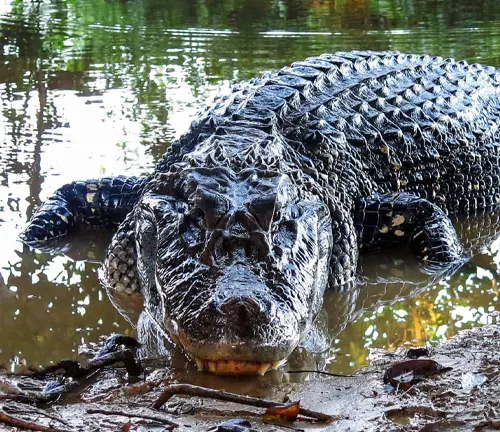
Behaviorally, black caimans are solitary hunters, relying on stealth and patience to capture a diverse array of prey, including fish, birds, mammals, and other reptiles. Despite their large size, they exhibit remarkable agility in the water, making them highly efficient predators. Breeding typically occurs during the dry season, with females constructing nests of vegetation near water bodies to lay their eggs. After an incubation period of approximately 90 days, the hatchlings emerge under the vigilant watch of their mother.
| Specification | Description |
|---|---|
| Scientific Name | Melanosuchus niger |
| Common Name | Black Caiman |
| Family | Alligatoridae |
| Size (Adult Male) | Up to 13 feet (4 meters) in length |
| Size (Adult Female) | Generally smaller than males |
| Weight | Up to 500 kilograms (1100 pounds) |
| Color | Dark, almost black |
| Habitat | Freshwater environments: rivers, lakes, swamps |
| Distribution | Amazon basin and other parts of South America |
| Diet | Fish, birds, mammals, other reptiles |
| Behavior | Solitary hunters, ambush predators |
| Breeding Season | Dry season |
| Nesting Sites | Near water’s edge, constructed of vegetation |
| Conservation Status | Vulnerable (IUCN) |
A Majestic Predator of the Amazon
The black caiman crocodile, scientifically known as Melanosuchus niger, is an apex predator inhabiting the waterways of the Amazon basin. Renowned for its formidable presence and sleek black appearance, this species holds a significant ecological role in its habitat.
Appearance and Physical Characteristics
The Black Caiman, scientifically known as Melanosuchus niger, is renowned for its imposing size and distinctive physical characteristics. Here’s an overview of its appearance and physical traits:
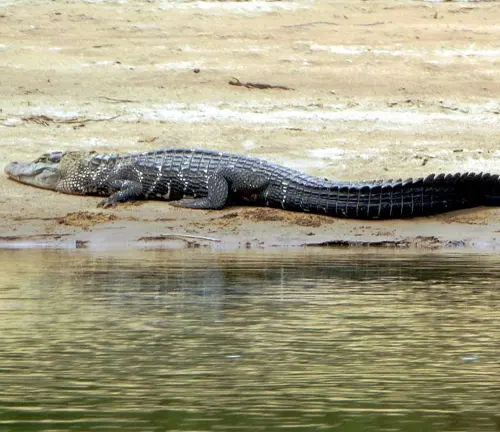
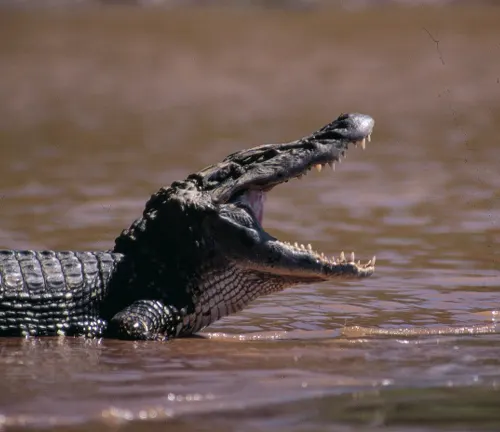

- Size: Black Caimans are among the largest members of the crocodilian family, with adult males typically reaching lengths of up to 13 feet (4 meters). Females are generally smaller than males, but they can still grow to impressive sizes.
- Coloration: As their name suggests, Black Caimans have dark, almost black, skin coloration, which helps them blend seamlessly into their freshwater habitats. This dark pigmentation serves as camouflage, allowing them to ambush prey effectively.
- Body Shape: Black Caimans have robust bodies with powerful jaws and thick, armored skin. Their streamlined shape and muscular tails enable them to move swiftly and efficiently through the water.
- Head: They have broad, elongated heads with prominent ridges running along their snouts. Their eyes and nostrils are positioned on the tops of their heads, allowing them to remain partially submerged while keeping a watchful eye on their surroundings.
- Teeth: Black Caimans have sharp, conical teeth that are well-suited for grasping and holding onto prey. Their teeth are continually replaced throughout their lives, ensuring they remain effective hunters.
- Limbs: Like all crocodilians, Black Caimans have four sturdy limbs with webbed feet that aid in swimming. While they are primarily adapted for aquatic life, they are capable of moving on land when necessary.
- Tail: Their tails are powerful and muscular, serving as both a propulsion mechanism in the water and a weapon for defense against predators or rivals.
Habitat and Distribution
The Black Caiman, native to South America, primarily inhabits freshwater environments such as rivers, lakes, and swamps within the Amazon basin and other parts of the continent. Here’s a closer look at its habitat and distribution:
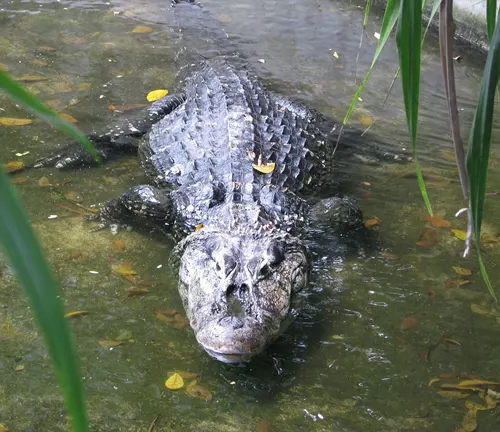
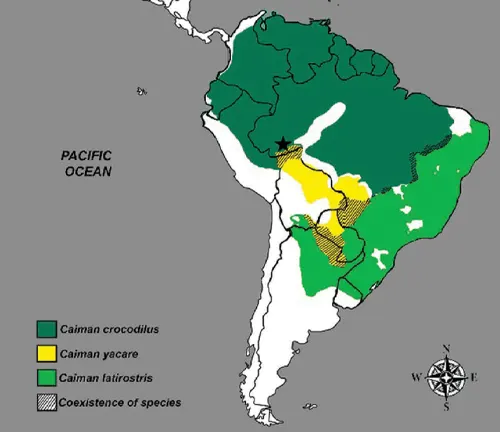
- Freshwater Habitats: Black Caimans are well-adapted to a variety of freshwater habitats, including slow-moving rivers, oxbow lakes, flooded forests, and marshes. They prefer areas with dense vegetation and ample prey availability.
- Amazon Basin: The Amazon basin, known for its vast and diverse ecosystem, serves as a primary stronghold for Black Caimans. They are found throughout the Amazon rainforest and its surrounding regions, including Brazil, Peru, Colombia, Ecuador, and Bolivia.
- Other Regions: While the Amazon basin is their primary habitat, Black Caimans are also found in other parts of South America, including the Orinoco basin in Venezuela and Colombia, the Guianas, and parts of the Pantanal wetlands in Brazil, Paraguay, and Bolivia.
- Freshwater Systems: Within their habitat range, Black Caimans inhabit a variety of freshwater systems, from small streams and tributaries to large, meandering rivers like the Amazon and its tributaries. They are often found lurking along the banks or submerged in the water, waiting to ambush prey.
- Preferred Conditions: Black Caimans thrive in warm, tropical climates with abundant water sources and dense vegetation. They require access to both terrestrial and aquatic habitats for breeding, nesting, and foraging.
- Human Impact: Despite their adaptability, Black Caimans face increasing threats from habitat destruction, pollution, and human encroachment. Deforestation, agricultural expansion, and infrastructure development pose significant challenges to their long-term survival.
Diet and Feeding Habits
Understanding the dietary preferences and feeding behaviors of animals is essential for grasping their ecological roles and how they interact within their environments. From specialized diets to unique feeding adaptations, the way animals obtain and consume food significantly impacts their survival and the overall balance of ecosystems.
Importance of Diet in Wildlife
Diet plays a pivotal role in the health, growth, and reproduction of animals. It provides crucial nutrients, energy, and sustenance necessary for bodily functions and overall well-being. A balanced diet ensures optimal health and contributes to the resilience of animal populations.
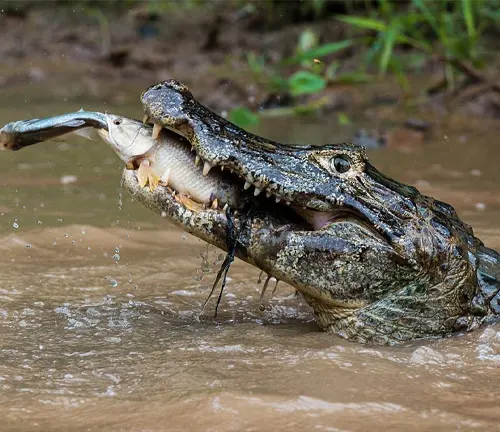
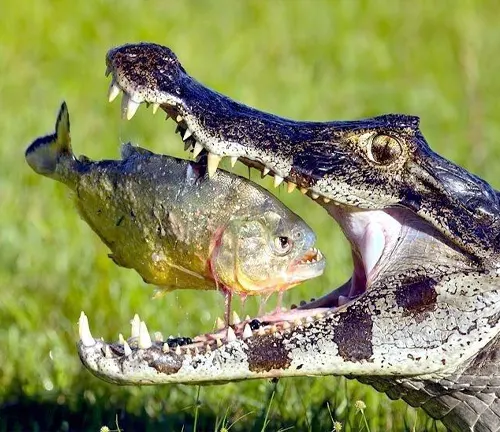
Factors Influencing Feeding Habits
Various factors influence an animal’s feeding habits, including physiological needs, environmental conditions, food availability, competition, and evolutionary adaptations. These factors shape the dietary preferences and behaviors observed across different species.
Types of Diets in Animals
Animals exhibit a diverse range of dietary preferences, broadly classified into three main types:
- Carnivorous Feeding Habits: Carnivores primarily feed on meat, relying on other animals as their primary food source. They possess specialized teeth and digestive systems adapted for hunting, killing, and digesting prey efficiently.
- Herbivorous Feeding Habits: Herbivores primarily consume plant matter, such as leaves, grasses, fruits, and seeds. They have specialized digestive systems capable of breaking down cellulose and extracting nutrients from plant material.
- Omnivorous Feeding Habits: Omnivores have a flexible diet, consuming both plant and animal matter. They display a wide range of feeding behaviors and may adjust their diet based on seasonal availability and nutritional requirements.
Specialized Diets
Some animals have specialized diets tailored to their specific ecological niches or dietary requirements. For instance, insectivores primarily feed on insects, frugivores focus on fruits, and piscivores specialize in eating fish.
Feeding Adaptations in Animals
Animals have evolved various feeding adaptations to enhance their food procurement capabilities. These adaptations may include specialized feeding structures, hunting techniques, foraging behaviors, and sensory adaptations.
Reproduction and Lifecycle
Understanding the reproductive strategies and lifecycles of animals is essential for comprehending their population dynamics and evolutionary adaptations. From mating rituals to parental care, the reproductive process plays a critical role in shaping the survival and persistence of species within their environments.
Mating and Reproduction
Mating behaviors and reproductive processes vary widely among different animal species. Mating rituals often involve elaborate displays, courtship dances, or vocalizations to attract potential mates. Once a mate is selected, animals engage in copulation, where fertilization occurs internally or externally, depending on the species.

Gestation and Birth
Following fertilization, females undergo gestation, a period during which the developing embryos receive nutrients and grow within the mother’s body. Gestation periods vary greatly among species, ranging from a few days to several months or even years. Once gestation is complete, females give birth to offspring, which may be born live or hatched from eggs, depending on the reproductive strategy of the species.
Parental Care
Parental care is common among many animal species and involves providing food, protection, and guidance to offspring during their early stages of development. Parental care strategies vary widely and may include incubating eggs, providing milk, teaching essential survival skills, and defending against predators. The level of parental care often correlates with the complexity of social structures and the demands of the environment.
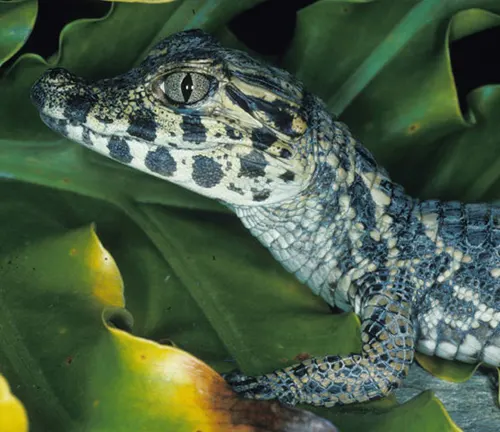
Growth and Development
After birth or hatching, young animals undergo a period of growth and development, during which they acquire the skills and abilities necessary for survival in their environment. This period may involve learning to walk, fly, swim, hunt, or forage, depending on the species. Growth rates and developmental milestones vary greatly among different animal groups and can be influenced by factors such as diet, environmental conditions, and genetic predispositions.
Life Stages
Animals typically progress through various life stages, including infancy, childhood, adolescence, adulthood, and old age. Each stage is characterized by distinct physiological and behavioral changes, such as maturation, reproductive maturity, and senescence. The duration of each life stage varies among species and can be influenced by factors such as lifespan, environmental conditions, and evolutionary pressures.
Survival and Reproductive Success
The ultimate goal of reproduction is to produce offspring that survive to reproductive age and successfully reproduce, thereby perpetuating the species. Survival and reproductive success are influenced by a variety of factors, including predation, competition for resources, disease, environmental variability, and human activities. Evolutionary processes act on traits that enhance an individual’s ability to survive and reproduce, ultimately shaping the genetic composition of populations over time.
Behavioral Traits
Understanding the behavioral traits of animals is crucial for gaining insights into their ecology, social dynamics, and adaptation to their environments. From communication signals to foraging strategies, behavioral traits shape the interactions and survival strategies of animal species.
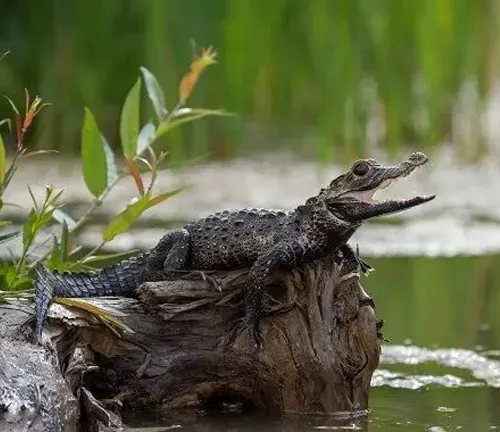


Communication
Communication is fundamental to animal behavior and serves various purposes, including mate attraction, territory defense, warning of danger, and coordination within social groups. Communication methods vary widely among species and may involve vocalizations, visual displays, chemical signals, or tactile cues.
Social Structure
Social structure refers to the organization of individuals within a population and encompasses aspects such as group size, hierarchy, and cooperative behavior. Animals exhibit a diverse range of social structures, from solitary individuals to complex societies with intricate social hierarchies.
Reproductive Behavior
Reproductive behavior encompasses the courtship rituals, mating displays, and parental care strategies employed by animals to ensure successful reproduction. Mating rituals often involve elaborate displays or behaviors designed to attract mates and demonstrate fitness.
Foraging and Feeding
Foraging and feeding behaviors are essential for acquiring food resources necessary for survival and reproduction. Animals employ various foraging strategies, including solitary hunting, cooperative hunting, scavenging, and specialized feeding adaptations tailored to their diet and habitat.
Territoriality
Territorial behavior involves the defense and maintenance of a defined area or territory against intruders. Territories serve multiple functions, including resource acquisition, mate attraction, and protection of offspring. Territorial animals may use visual displays, vocalizations, or physical aggression to defend their territory.
Migration and Dispersal
Migration and dispersal behaviors involve the movement of animals between different habitats or geographical regions in response to seasonal changes, resource availability, or environmental cues. Migration allows animals to exploit resources in different areas and avoid unfavorable conditions.
Aggression and Dominance
Aggression and dominance behaviors play a role in establishing social hierarchies, securing access to resources, and defending territories. Dominant individuals may use displays of aggression, such as threats, vocalizations, or physical combat, to assert their dominance over rivals.
Learning and Adaptation
Animals exhibit a remarkable capacity for learning and adaptation, allowing them to acquire new skills, behaviors, and strategies in response to changing environmental conditions or challenges. Learning mechanisms include trial-and-error, observational learning, and social learning from conspecifics.
Cognitive Abilities
Cognitive abilities vary among animal species and encompass processes such as problem-solving, memory, spatial navigation, and communication. Animals demonstrate remarkable cognitive skills in tasks such as tool use, navigation over long distances, and recognition of individuals.
Conservation Status
The conservation status of a species reflects its risk of extinction and the urgency of conservation efforts needed to ensure its survival. Factors such as habitat loss, overexploitation, pollution, and climate change can threaten the viability of populations and contribute to declining populations. Understanding the conservation status of species is essential for prioritizing conservation actions and implementing effective management strategies.
IUCN Red List Categories
The International Union for Conservation of Nature (IUCN) assesses the conservation status of species using the IUCN Red List of Threatened Species, which categorizes species into different threat categories based on criteria such as population size, habitat loss, and population decline rate. The main categories include:
- Least Concern (LC): Species that are widespread and abundant with no immediate threat of extinction.
- Near Threatened (NT): Species that are close to qualifying for a threatened category but do not currently meet the criteria.
- Vulnerable (VU): Species that are facing a high risk of extinction in the wild due to habitat loss, overexploitation, or other threats.
- Endangered (EN): Species that are at a very high risk of extinction in the wild if conservation actions are not implemented urgently.
- Critically Endangered (CR): Species that are at an extremely high risk of extinction in the wild and require immediate conservation attention.
- Extinct in the Wild (EW): Species that are no longer found in their natural habitat but survive in captivity.
- Extinct (EX): Species that are no longer found in the wild or captivity and are considered extinct.
Conservation Efforts
Conservation efforts aim to protect and restore habitats, reduce threats, and mitigate human impacts on biodiversity. Conservation actions may include habitat restoration, captive breeding programs, protected area establishment, community engagement, and policy development.
Challenges and Threats
Despite conservation efforts, many species continue to face numerous challenges and threats to their survival. Habitat loss and degradation, overexploitation of natural resources, poaching, climate change, pollution, invasive species, and disease outbreaks are among the primary threats to biodiversity.
Role of Conservation Organizations
Conservation organizations play a critical role in addressing these threats and implementing conservation initiatives. They conduct research, raise awareness, advocate for policy change, mobilize resources, and collaborate with governments, local communities, and other stakeholders to protect and conserve biodiversity.
Different Species
Spectacled Caiman
(Caiman crocodilus)
This species is native to Central and South America and is named for the bony ridge between its eyes that resembles spectacles. It is smaller than the Black Caiman and has a more varied diet, including fish, amphibians, birds, and small mammals.


Broad-snouted Caiman
(Caiman latirostris)
Found primarily in freshwater habitats in South America, the Broad-snouted Caiman has a distinctive broad snout and a varied diet that includes fish, crustaceans, and small mammals.
Yacare Caiman
(Caiman yacare)
Native to central South America, the Yacare Caiman is similar in appearance to the Spectacled Caiman but has a more restricted range. It primarily inhabits wetlands and feeds on fish, amphibians, and small mammals.

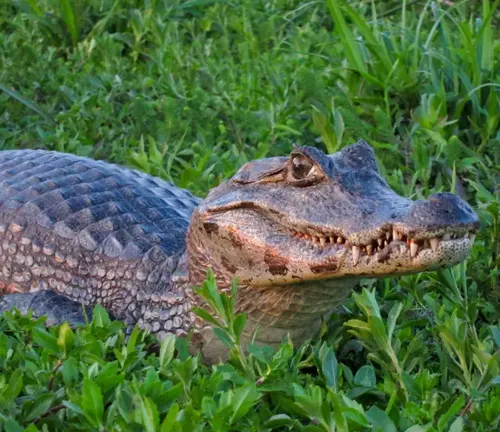
Cuvier’s Dwarf Caiman
(Paleosuchus palpebrosus)
Unlike the larger Black Caiman, Cuvier’s Dwarf Caiman is a smaller species native to the Amazon basin. It typically grows up to 1.2 to 1.5 meters in length and inhabits shallow, slow-moving waters.
Frequently Asked Questions (FAQs)
- Are Black Caimans dangerous to humans?
While Black Caimans are generally wary of humans and prefer to avoid confrontation, they can become aggressive if threatened or provoked. It’s essential to exercise caution and respect their natural habitat. - How big do Black Caimans get?
Male Black Caimans can grow up to 13 feet in length, although some individuals may exceed this size. Females are generally smaller than males. - What do Black Caimans eat?
Black Caimans have a diverse diet that includes fish, birds, mammals, and other reptiles. They are apex predators in their ecosystem. - How long do Black Caimans live?
In the wild, Black Caimans typically live for around 50 to 60 years. However, their lifespan can vary depending on factors such as habitat quality and human threats. - Where do Black Caimans live?
Black Caimans primarily inhabit freshwater environments such as rivers, lakes, and swamps within the Amazon basin and other parts of South America. - What is the conservation status of Black Caimans?
Black Caimans are listed as vulnerable by the International Union for Conservation of Nature (IUCN) due to habitat loss, hunting, and illegal trade. - How do Black Caimans reproduce?
Breeding typically occurs during the dry season when water levels are low. Female Black Caimans construct nests of vegetation near the water’s edge, where they lay their eggs. After an incubation period of around 90 days, the hatchlings emerge and are guarded by their mother. - What are the threats to Black Caimans?
The main threats to Black Caimans include habitat destruction due to deforestation, human encroachment, hunting for their valuable skins and meat, and the illegal pet trade. - How do Black Caimans hunt?
Black Caimans are stealthy hunters, relying on patience and ambush tactics to catch their prey. They are skilled at hunting both in and out of the water. - Do Black Caimans have any predators?
As apex predators, Black Caimans have few natural predators. However, they may occasionally be preyed upon by large predators such as jaguars. - Do Black Caimans migrate?
Black Caimans do not typically migrate long distances. However, they may move within their range in search of suitable hunting grounds or nesting sites. - How do Black Caimans communicate?
Black Caimans communicate through vocalizations, body language, and chemical signals. They may use vocalizations such as grunts and hisses to communicate with other individuals.



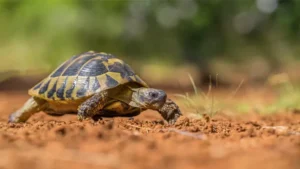

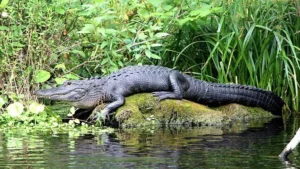

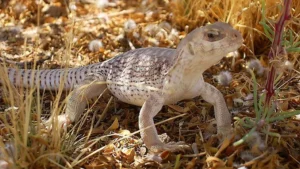



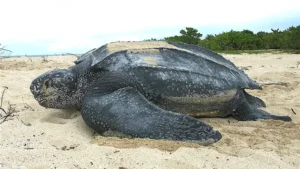


Leave your comment